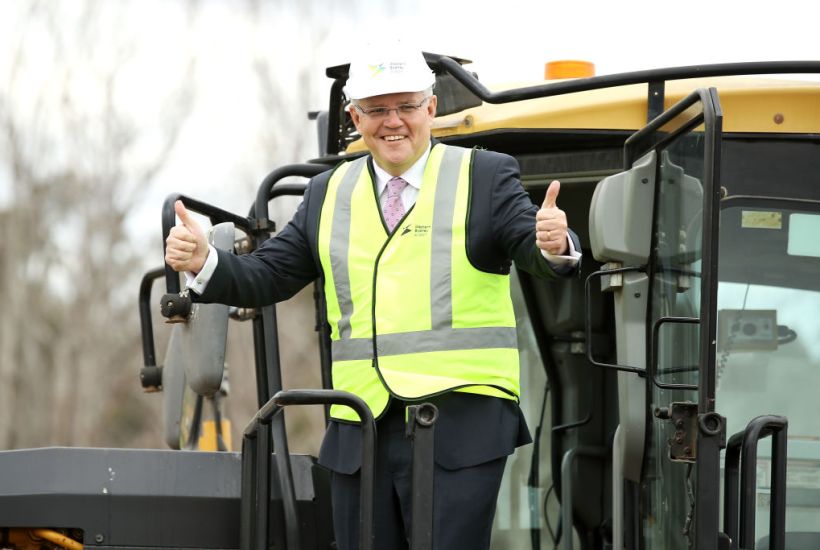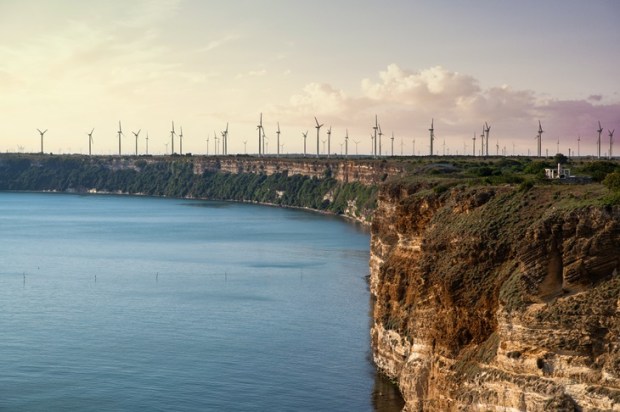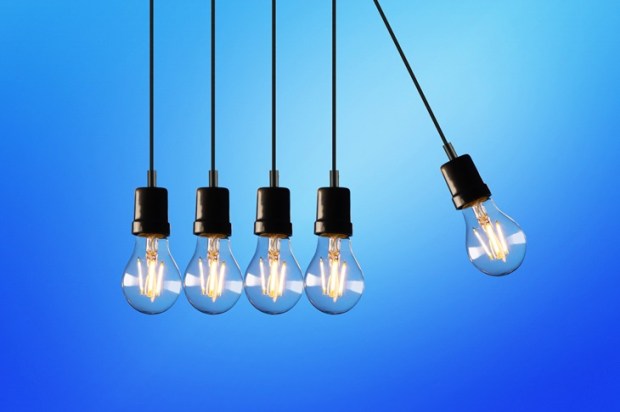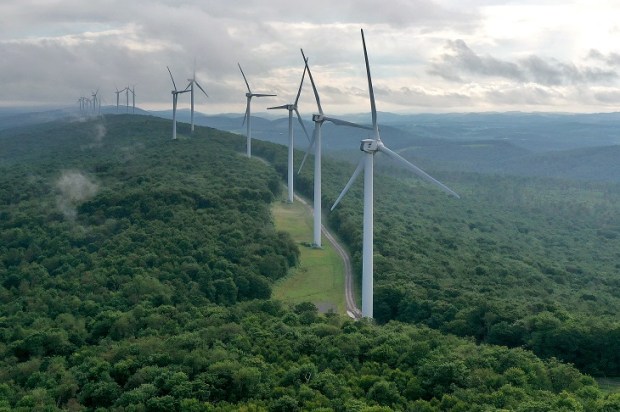Energy and climate change policy in Australia and other western democracies is now, along with immigration and its associated fear of imported third world violence, the cutting edge of the political divide.
But in Australia, the Liberal Party’s policy over the past 20 years has converged with that of the Labor Party and latterly the Greens to favour increased subsidies to electricity generated from wind and solar. This has knocked out lower cost, more reliable coal generators and doubled wholesale prices, with costs further enhanced by a consequent need for more spending to offset wind’s unreliability and on poles and wires.
The Liberals (supported by Labor) have responded to these regulatory induced cost increases by requiring retailers to reduce prices, a measure that is certain further to deter efficient investment, bringing still higher costs.
To establish credentials among virtue signalling global warming alarmists and renewable energy subsidy-seekers, Scott Morrison has also announced a new version of the Labor-lite policy approach. The new policy entails an additional $2 billion – albeit over 10 years – of “Direct Action” expenditure on renewables, lowering farming output, subsidies to pumped storage and other misanthropic policies. It comes on top of existing subsidies to wind and solar.
The deleterious effects of these policies on efficient supply are further enhanced by state government restraints (bans in the case of Victoria) on the search for additional gas supplies.
The malaise of increased electricity prices compounded by less certain reliability reflects seductive agitprop describing renewables as being freely donated by the sun and wind. Free they are, but harnessing them and delivering the diffuse power they provide is very expensive.
According to the exhaustive evaluation by Solstice, while a new coal plant could deliver electricity at a cost as low as $40 per MWh, the best wind could achieve is $64 per MWh with solar at $90 per MWh and both wind and solar also require firming contracts in view of their unreliability. These lift the cost of wind by over $30 per MWh.
Forcing substitution of existing low-cost coal energy by high-cost wind/solar energy panders to those who have swallowed, contrary to the evidence, the myth that human development involving fossil fuel use is bringing dangerous global warming.
The vocal support of climate alarmists is bolstered by that of others who claim that getting out of coal/gas/oil will not be expensive since wind/solar is cheaper. Nobody making that claim has sufficient confidence in it to adopt its corollary: the elimination of subsidies supporting these forms of energy.
Economic modelling analysis of the effects of renewable regulations has offered diverse forecasts. Such analyses are dependent on their assumptions about future costs of different energy forms, the ability of economies to adjust rapidly and the costs of such adjustment. What is certain is that three-quarters of our exports are from mining; without fossil fuels – the goal of the green left – these would disappear leaving Australia’s living standards closer to those of the third world than first world countries.
Less implausible than most such studies is a recent one by Brian Fisher. This finds the effect on energy prices from the ALP’s goal of 45 per cent emission reduction target would reduce GDP $144 billion a year by 2030. He also estimates that what the present government considers to be sound administration, its 26-28 per cent emission reduction target, would still mean GDP $19 billion lower in 2030.
Over the past decade, renewable energy “investments” in Australia have soaked up some $72 billion in capital. None of this would have taken place without subsidies. By forcing the closure of lower cost coal generators, that expenditure has had a negative value-added. It has more than cannibalised available capital and in doing so has contributed to the very low levels of productivity growth Australia (like other, similarly placed countries) has experienced.
Businesses, including those owned by governments, with existing coal and hydro generation assets, have seen a massive profit bonanza from the doubling of prices that has been the outcome of the subsidies to renewable energy. This is most tellingly illustrated by the NSW coal generator, Vales Point, sold in 2015 for $1 million and now worth in excess of $700 million. The big three with coal assets (AGL, Origin and EnergyAustralia) have made corresponding gains, as have the coal generators owned by the Queensland government and the major hydro assets in Tasmania and the Snowy.
Such windfall gains are by-products of regulatory measures rather than from meeting new or expanded customer needs.
The way forward has to include the removal of all subsidies to wind and solar but, given the proclivities of governments to intervene in the energy market, such measures may now be insufficient. Loss of investor confidence in the stability of energy policy may now require additional assurances, perhaps in the form of contractual guarantees. Such an approach is envisaged in the government’s Underwriting New Generation Investments (UNGI) but that program is at pains to provide scope for renewables to also gain further subsidies.
If the UNGI does represent half a step to redressing the subsidy to renewable energy, it is accompanied by multitudes of steps backwards. Not the least of these is the cavalcade of regulatory barriers placed one after another before the prospective Adani coal mine in Queensland. This is a message to all investors that politics is raising the cost of doing business in Australia. Then there is the dictum in the Rocky Hill case by the head of the NSW Environment Court which would seem to ban all future coal mining, or at the very least exorbitantly raise its costs by requiring expenditure on offsetting emission reductions.
In addition, we are seeing investor associations, reported by the Australian Financial Review, especially by funds with extensive exposure to renewable investments, placing pressure on coal industry mining firms to desist or slow down coal investments.
Almost all the portents for the immediate future of the Australian energy system (and hence for the Australian economy) are negative. Aside from the minor conservative parties and a handful of Coalition politicians, the politics is driven by focus group analyses which report people being in favour of ‘free stuff’.
There is little stomach for leadership by politicians who either support the prevailing ideology or, valuing their careers above the public good, prefer not to explain that the free stuff is both paid for and undermines the low-cost electricity from which Australia should be benefitting.
Sub-optimal economic performance is therefore set to continue.
Longer term relief for Australia may have to await the results of the outcome in strong economic performance stemming from the leadership that President Trump is demonstrating in abandoning costly measures that require suppression of carbon dioxide emissions. Trump has shown commendable scepticism about climatic catastrophism. Moreover, he has recognised that actions by the US – indeed the entire western world – can have no climatic effect in view of the explosive growth of India, China and other developing nations, growth that is powered by fossil fuels, the resulting emissions of which now dwarf those of the rest of the world.
Trump’s leadership is already paying dividends with US growth outpacing that of other developed countries. Energy-intensive industries, including those of the Pratt Group, are responding by shifting the balance of new venture spending towards the US.
But it may be some time before Australia awakens to the self-inflicted injurious policies that have transformed the nation’s energy supply from the world’s cheapest to among the world’s most expensive.
Alan Moran’s latest book is CLIMATE CHANGE: Treaties and policies in the Trump era.
Got something to add? Join the discussion and comment below.
Got something to add? Join the discussion and comment below.
Get 10 issues for just $10
Subscribe to The Spectator Australia today for the next 10 magazine issues, plus full online access, for just $10.


























Comments
Don't miss out
Join the conversation with other Spectator Australia readers. Subscribe to leave a comment.
SUBSCRIBEAlready a subscriber? Log in